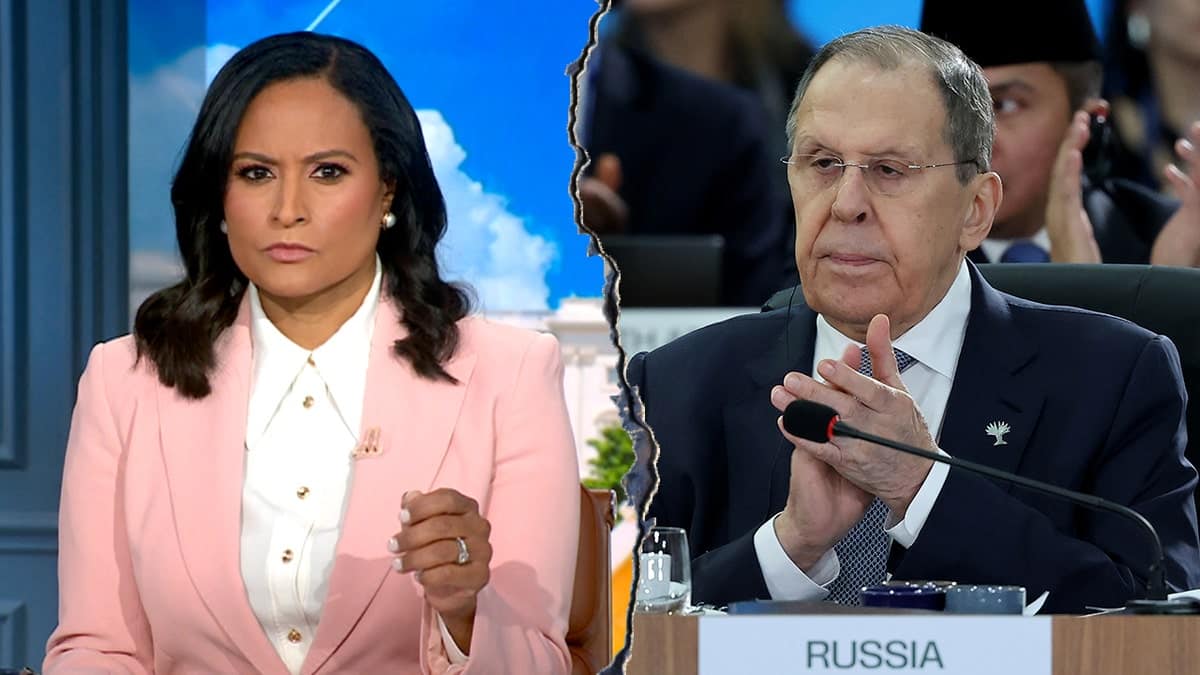Foreign Minister Sergey Lavrov told NBC’s Kristen Welker of Meet the Press that no meeting between Russian President Vladimir Putin and Ukrainian President Volodymyr Zelenskyy is currently in the works. The Russian diplomat indicated his government is not interested in such a meeting until a “presidential agenda” was agreed upon that included certain Russian demands, including an agreement Ukraine will not seek membership in NATO and will discuss ceding some territory to Russia.
“When President Trump brought … those issues to the meeting in Washington, it was very clear to everybody that there are several principles which Washington believes must be accepted, including no NATO membership, including the discussion of territorial issues, and Zelenskyy said no to everything,” said Lavrov.
Trump has positioned himself as an arbitrator, a peacemaker between two warring governments. And therein lies the problem. As Daniel McAdams pointed out several months ago in an interview with this writer, Washington can’t be an arbitrator in this conflict because it is a party to the conflict. “It’s like having a boxing match and the referee starts punching somebody,” quipped McAdams.
Indeed, I said the same thing just days after the war started. It has been clear from the beginning to anyone being honest with himself this war was never between Ukraine and Russia. It was a war between Washington and Russia, fought by Ukrainians on their land but funded and directed by Washington. It began in 2014 when Washington overthrew the democratically elected Ukrainian government and installed a Washington puppet, who immediately tried to take away Russia’s naval base at Sevastopol.
This came at a time when Washington “just happened” to be conducting a regime-change war in the country home to Russia’s only other reliably ice-free port on this side of the Eurasian continent, Syria. I wrote in 2016, when presidential candidate Hillary Clinton suggested putting a no fly zone over Syria, that Russia would never give up its bases in Syria and Ukraine.
Russia did eventually allow Syrian President Bashar Al-Assad to be deposed, for reasons that are still unclear, and abandoned its base in Syria. It may have been simply a matter of priorities. The base in Syria was much smaller than Sevastopol’s and not nearly so close to Russia’s border. In the great scheme of things, it was expendable.
Sevastopol was another story. Home to Russia’s Black Sea Fleet for over 240 years, that base was not expendable. Washington’s 2014 attempt to take it away resulted in Russia’s annexation of Crimea and the beginning of an eight-year civil war in eastern Ukraine, which effectively ended with Russia’s 2022 invasion.
Rather than three years, the Ukraine War is now in its twelfth year, prosecuted by Washington under three presidents (Obama, Trump, Biden, and now Trump again) and not very successfully, depending upon how success is measured. If the object was merely to keep taxpayer funds flowing to U.S. defense contractors, it has been a wild success. But if the object was the three decades-long neoconservative obsession with keeping Russia from reemerging as a great power, it has achieved precisely the opposite.
In addition to annexing Crimea, Russia has now annexed territory in Ukraine which comprises most of the country’s energy reserves. Russia’s military has expanded significantly in size and capabilities since 2022. Even Washington’s attempt to cripple Russia economically has backfired.
Like every previous war, this one has produced worse results – even by imperial standards – than if it were never fought at all.
Trump, representing Washington, is now looking for a way out but he refuses to fully acknowledge reality. Yes, his suggestions that Ukraine must accept territorial concessions and non-membership in NATO partially does so, but he is still operating under the delusion that Washington is a mediator rather than a belligerent in the war.
It is a longstanding plank of international law that funding one side of a war between other nations nullifies the funding nation’s neutrality. Yet, Trump continues to both hold himself up as a peacemaker and commit to continue funding Ukraine in the same breath.
Along with this primary delusion, Trump also likely believes Washington’s highly distorted assessment of the losses on both sides. The truth is Russia has lost far fewer soldiers than the American public has been led to believe, and Ukraine has lost far more.
As the victor, Russia has zero incentive to make any deal that does not include all of its primary objectives. Nor is there any incentive to rush. Every week the war continues, Russia’s hand gets stronger, not weaker. It is Washington that needs to hurry, lest the terms Russia is willing to accept get even more one-sided.
Washington was able to spend twenty years in Afghanistan to replace the Taliban with the Taliban and still not explicitly acknowledge defeat. It can attempt to do the same with Ukraine, although it will be much more difficult to pull off given Russia’s acquisition of new territory. If a deal isn’t reached soon, it will be impossible.
Reprinted with permission from Tom Mullen Talks Freedom.
Subscribe and support here.

